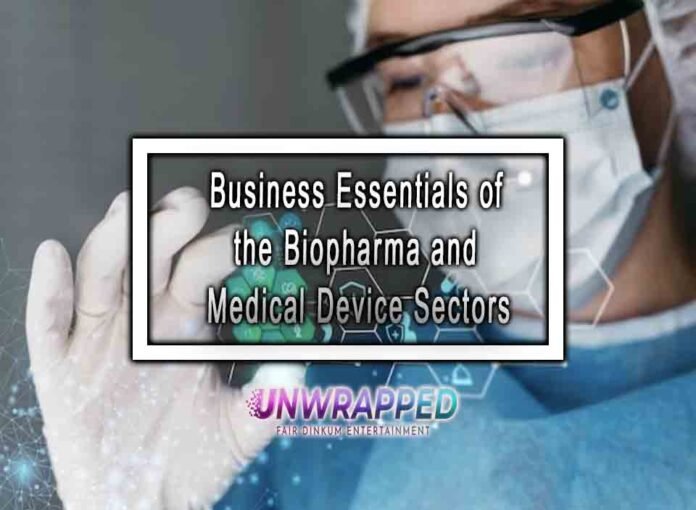Biopharma and medical devices are the two most important aspects of the global healthcare business. Both these sectors bring in new ideas to the table that will affect the healthcare needs of people in the future.
In this med-advanced world, both biopharma and medical devices depends a lot on a few key factors. Biopharma is all about doing cutting edge research, following strict rules, and protecting intellectual property, whereas, the medical device business, focuses on new ideas, quality control, and making supply chains more efficient.
This interaction between these two sectors show how well medical world is proceeding. Want to know more about these two sectors? If yes, then binge on till the end of the blog.
Biopharma and Medical Device Sectors: An Overview
Biopharma Sector
The biopharma sector’s job is to develop medicines and other medical items that can help treat and manage a wide range of illnesses and conditions. In order to find new drug compounds, therapeutic methods, and biotechnological solutions, it puts a lot of weight on research and development (R&D).
In most cases, biopharma companies use organic sources like DNA, proteins, living cells, and tissues. They make biologics, which are complicated drugs made from large molecules that are usually made through biological processes like cell cultures.
Many government agencies, like the U.S. Food and Drug Administration (FDA) and the European Medicines Agency (EMA), keep a close eye on the biopharma industry.
Before pharmaceutical products can be sold, they are checked by regulatory officials to make sure they are safe, effective, and of good quality.
The Medical Sector
The medical device industry plans, builds, and sells different medical tools and instruments used in hospitals and other healthcare settings. It includes a wide range of tools, from simple surgical equipment to even complicated imaging and diagnostic ones. To get to know more about it, you can enroll into this biotech business development course.
Medical device businesses make technologies and tools that help doctors diagnose, treat, and keep an eye on patients. These devcies are pretty essential for making healthcare better and helping patients get better results.
In the US, regulatory groups like the FDA keep a close eye on medical devices to make sure they are safe, effective, and of good quality. Before getting regulatory permission, devices have to go through a lot of testing and evaluation.
Business Essentials of the Biopharma and Medical Device Sectors
Biopharma
- Biopharma focuses on ongoing research and development to come up with new medicines and treatments.
- Pharmaceutical companies put a lot of money into research and development (R&D) to find and make new drugs, mainly biologics, gene treatments, and precision medicine.
- Biopharma business is strict regulatory oversight. Med companies have to follow strict rules to ensure their products are safe, effective, and most importantly of good quality.
- In the biopharma industry, intellectual property like patents is very important. Drug development often takes tens of time and money, so companies protect their innovations to keep them exclusive and get their money back.
- It’s essential for new drugs to be able to deal with the complicated issues of price, reimbursement, and market access. This overall assessment will help the business to strive in the competitive business.
Medical Device
- The medical device industry is driven by innovation, which aids to makes new and effective devices.
- Companies need to put money into product development to come up with new devices that meet changing healthcare needs and are safe and effective.
- To run a med-device business, the company needs to focus on certain rules and regulations and ensure the best quality standards.
- Ensuring that medical devices can get on the market and get paid for is pretty essential. To be astoundingly successful in the market, you need to know how reimbursement policies work and be able to work with healthcare providers and suppliers.
- For production to be cost-effective and delivery on time, the manufacturing methods and supply chain management must work well.
Combined Sectors
- Healthcare providers, hospitals, and clinics work with both areas to ensure that their products are properly used in patient care.
- Both of these industries are often looking for ways to grow internationally in order to reach new consumers. To do this, they have to make changes to fit local laws and healthcare systems.
- Navigating complicated healthcare systems, making sure products are covered, and negotiating price and reimbursement agreements are hard for both sectors.
- Data from clinical studies are important for both industries because they help regulators decide whether a product is safe and effective.
Bottom Line
Despite the healthcare industry is always changing, the biopharma and medical device sectors are the two most crucial sectors so far. As long as these two sectors are combined, there will always be a steady flow of progress since both the sectors are only committed to new ideas and innovations for the betterment of the world.
Therefore, as long as there’s proper rules, regulations, and commitment to serve the people, these two med-business sectors will always keep booming.










